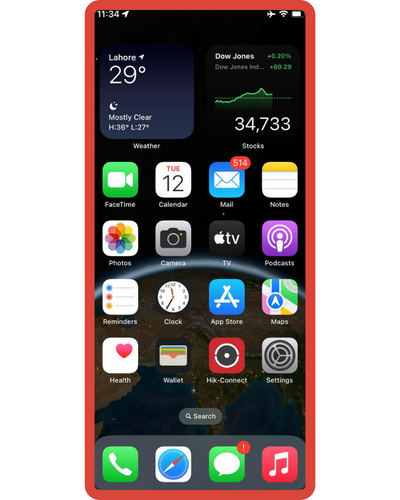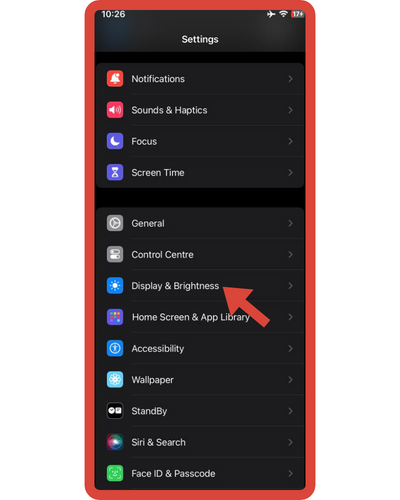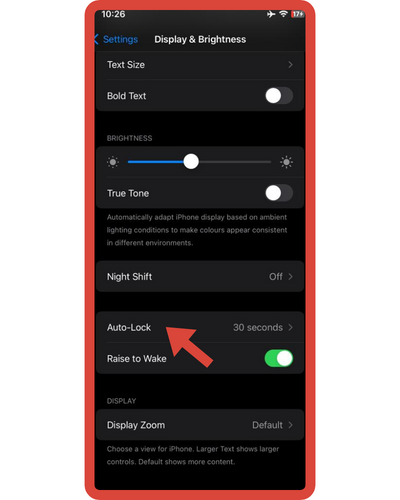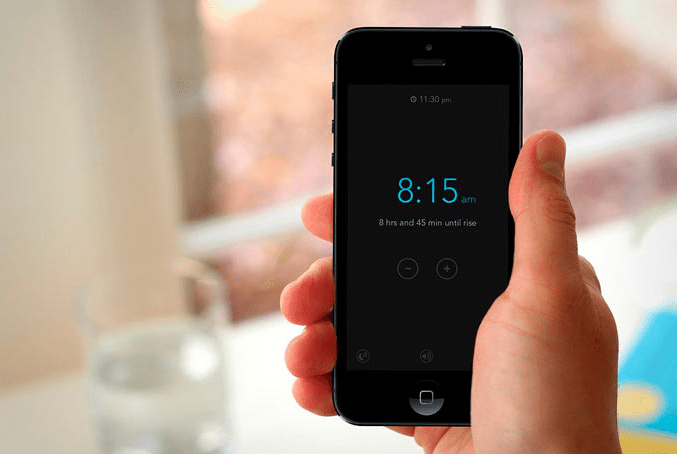Hello, readers! I’m Mannan Wasif, an iPhone enthusiast with over 8 years of experience sharing valuable tips and tricks for iPhone users. Throughout my journey, I’ve become an expert at navigating the ins and outs of Apple’s iconic device.
Today, I’m here to guide you on an essential topic: How To Change Screen Timeout On iPhone. By mastering this feature, you can optimize your device’s behavior and enhance your overall user experience.
Ready to be the master of your device’s clock? Discover the art of changing the time on your iPhone through our expert guide and ensure every second counts.
In this comprehensive blog post, I’ll walk you through the step-by-step process of adjusting the screen timeout settings on your iPhone. Whether you own the latest iPhone model or an older version, these instructions will help you customize the screen timeout duration according to your preferences.
Let’s delve into the world of screen timeouts and unlock the potential of your iPhone’s display settings.
How to change the screen timeout on iPhone?
Your iPhone’s Auto-lock Screen timeout can be changed, which means that you can absolutely do so. The Auto-Lock option can be disabled altogether or set to six different time intervals.
There are 30-second to 5-minute options available. The screen will remain off after a certain period of time, but it will also lock your device automatically, as its name suggests.
As a result, you will always be advised to select the shortest available value to conserve battery life. The sooner your display turns off after a period of inactivity, the better, since it consumes a lot of battery power. Even with this decision, there will always be those who disagree, preferring to keep the screen on for longer periods.
The screen timeout for iPhone Auto-Lock can be changed easily in the system settings of iOS. To do so, follow the instructions below:
- Go to Settings.

- To adjust brightness, tap Display & Brightness.

- Press the Auto-Lock button.

- Alternatively, you can disable the Auto-Lock feature or choose your preferred time interval.

Pressing the Power (Sleep) button will lock and power off your iPhone if you wish to disable Auto-Lock.
Want to shut down your iPhone, but the power button isn’t responsive? Learn how to turn off your iPhone without a power button and regain control over your device’s shutdown process!
Benefits Of Changing The Screen Timeout On Your iPhone
Here are the benefits of changing the screen timeout on your iPhone:
- Battery Conservation: By reducing the screen timeout, you conserve battery life as the display turns off sooner when not in use, leading to extended usage without needing frequent charging.
- Privacy and Security: A shorter screen timeout minimizes the chances of someone accessing your device when it’s left unattended, enhancing privacy and security.
- Accidental Touch Prevention: Setting a shorter timeout duration helps prevent unintentional touches or actions on the screen, avoiding accidental interactions with apps or settings.
- Personalized Experience: Customizing the screen timeout aligns the device’s behavior with your preferences, providing a tailored and efficient user experience.
- Quick Access: A shorter timeout leads to quicker access to your device, as the screen activates promptly when you pick it up, improving usability.
- Screen Longevity: Decreasing the screen timeout extends the lifespan of the display by reducing the time it remains active, contributing to the overall longevity of your iPhone.
- Energy Efficiency: Adapting the screen timeout promotes energy efficiency by preventing the screen from staying on unnecessarily, thereby reducing power consumption.
- Enhanced User Comfort: A shorter screen timeout reduces eye strain and discomfort, especially in low-light environments, as the display dims or turns off sooner.
- Environmental Impact: Lowering the screen timeout supports environmental sustainability by using less energy, contributing to reduced carbon footprint associated with device usage.
- Adherence to Policies: In professional or educational settings, adjusting the screen timeout ensures compliance with policies that mandate device inactivity after a specific period, enhancing adherence.
How to change the Screen Timeout on iPhone X?
Many amazing features come with the iPhone X. Users can customize these features according to their preferences. If using your iPhone X to adjust screen timeout and time lock settings is of interest to you, there is a limit to how much information you want others to be able to see, so you must have classified information on your iPhone to use this feature.
Certain iPhone X users use the device to take notes during confidential meetings. Some people even have a list of their PIN codes and passwords stored on their phones.
If you leave your phone unattended among colleagues or acquaintances, you may forget to turn off the backlight. A device that does not auto-lock or requires either a PIN code, a pattern, or Face ID for unlocking could pose a threat to your privacy. For many, unauthorized access can spell doom in only a few seconds or minutes.
You have drafts of blueprints on your phone if you are the CEO of a design company. Your designs could be copied by others if you left your phone unattended among competitors. Learn how to edit your iPhone’s screen timeout to prevent this from happening.
On the iPhone X, you can adjust the screen timeout
You can adjust the screen timeout by following these steps:
- Open the Settings application on your iPhone X.

- Select Display & Brightness.

- Select Auto-Lock from the menu.

- The settings can be changed as you wish here. For example, you can turn off the timer in one-minute increments and never turn it on again.

I’m also working on additional blog posts in the “Change” group, covering tasks like changing the snooze time on the iPhone, changing the Bluetooth name on the iPhone, and more. If these topics grab your interest and you’re curious to learn about them, feel free to give them a look.
Best way to change iOS 11’s auto-lock time?
When iOS 11 (and all previous versions) detects that there hasn’t been any human interaction for a certain period of time, it automatically locks the screen and puts the device to sleep.
It also prevents your data on the device from being seen by others while you’re not around, thus saving a significant amount of battery. You should set your iOS device to automatically lock after a minimum amount of time.
Changing your iOS 11 device’s auto-lock time is as easy as following these steps:
- Open the Display & Brightness window: Select Display & Brightness from the Settings menu. The Display & Brightness window section now gives you access to all display settings on your device.
- To access the Auto-Lock window, click the Auto-Lock button: Press Auto-Lock. You can choose a one-time preset to automatically lock your device from this window to open the Auto-Lock window.
- Set the time threshold for auto-locking: Choose a time period that suits your needs. If your iDevice doesn’t detect any input during the selected time, you can automatically lock the screen and put it to sleep.
For example, if you leave your phone untouched after unlocking it and select 1 minute in the Auto-Lock window, the screen will automatically lock after 1 minute.
Note: You will always need to manually lock your device when you select Never in the Auto-Lock window.
Frequently Asked Questions
Certainly! Here are a couple of FAQs along with their answers that I will include in this section:
1. Why should I change the screen timeout on my iPhone?
Changing the screen timeout on your iPhone offers several benefits. Firstly, it helps conserve battery life by automatically turning off the display when not in use. Secondly, it enhances privacy and security by ensuring that your device locks itself after a certain period of inactivity. Lastly, adjusting the screen timeout can provide convenience, allowing you to customize the timing based on your specific needs and preferences.
2. Can I completely disable the screen timeout on my iPhone?
Yes, you have the option to disable the screen timeout on your iPhone, but it’s generally not recommended. Keeping the screen on indefinitely can significantly drain your battery. However, if you have a valid reason to keep the screen continuously active, such as during a presentation or while using certain apps, you can choose the “Never” option in the Auto-Lock settings. Just keep in mind that you’ll need to manually lock your device in such cases.
3. How can changing the screen timeout affect my iPhone’s battery life?
Adjusting the screen timeout can have a significant impact on your iPhone’s battery life. By setting a shorter screen timeout duration, you ensure that the display turns off more quickly when not in use, conserving battery power. It’s recommended to choose the shortest duration that suits your needs to maximize battery efficiency.
4. Will changing the screen timeout affect notifications on my iPhone?
No, changing the screen timeout settings does not affect notifications on your iPhone. Notifications will still be received and displayed on the lock screen or in the notification center based on your device settings. Adjusting the screen timeout only determines when the display turns off after a period of inactivity.
5. How can I quickly lock my iPhone without waiting for the screen timeout?
If you want to lock your iPhone immediately without waiting for the screen timeout, you can simply press the Power (Sleep) button located on the side or top of your device. This instantly locks your iPhone’s screen and puts it into sleep mode.






